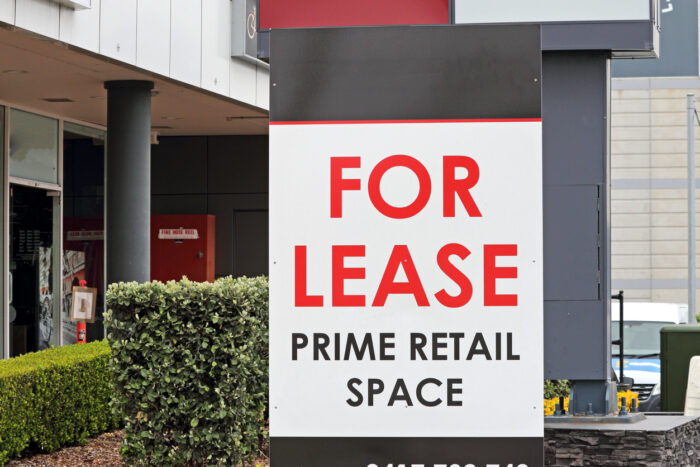Insights
What is an Agreement for Lease? And what should an AFL include?
Published
03 September, 2024

Fewer parties are more important in a commercial property transaction than your tenant. Which is why ensuring favourable lease terms in your Agreement for Lease (AFL) is critical for not only a successful investment, but a lasting relationship between you and the business taking up residence in your asset.
For commercial property investors in Australia, a well-structured AFL is not only a legal requirement but also a tool to ensure a mutually beneficial relationship with tenants. Today, we’ll explore why an AFL is important, what you should include in one and how it can foster positive relationships between you and your occupants.
What is an Agreement for Lease (AFL)?
An Agreement for Lease is a binding contract that outlines the terms, tenure and conditions in which a tenant will lease a commercial property before the actual lease begins.
An AFL is not a lease agreement. It’s a precursor to it, and it often includes conditions that need to be met before the lease commences. The AFL binds both parties to the terms stated inside it, ensuring a clear and legally enforceable understanding of what’s expected from both sides.

Perhaps the property is occupied by another tenant, with several years remaining on their tenancy. Or the asset is in development, and the prospective tenant wants to secure their occupancy well before the handover date. Whichever the reason, an AFL can be extremely beneficial for both forward-thinking landlords and tenants.
Why is an AFL important?
We’ve had AFLs in place for up to three years before the tenant moved in. Landlords benefit from them because they effectively secure the occupant years ahead of the property being available. And tenants benefit from them because they know the premises is legally theirs to occupy on an agreed upon date.
For commercial property investors, the AFL serves several critical functions:
Clarity and certainty
An AFL provides a clear framework of the obligations and rights of both the landlord and the tenant. This clarity helps prevent misunderstandings and disputes down the line, ensuring both parties are on the same page before their official landlord-tenant relationship begins.
Legal protection
An AFL offers legal protection to both parties. Should any disputes arise before the lease begins, the AFL can serve as a reference point to resolve leasing issues (amicably and legally).
Commitment and security
Verbal agreements are nice but legally worthless in the property game. For investors, having an Agreement for Lease in place means a commitment from the tenant, reducing the risk of last-minute changes of mind or withdrawal.
7 key elements to include in an AFL

While not a list that should be relied upon for your own AFL, this is a high-level rundown of what you should consider in an effective Agreement for Lease:
- Premises description: A detailed description of the property. Include the boundaries, floor plate sizes and any specific areas included or excluded from the net lettable area (i.e. common areas).
- Lease term: Of course, include the duration of the lease, plus renewal options (if any).
- Rent and outgoings: Thanks to Triple Net Leases, a brilliant benefit that commercial property has over residential real estate is that your tenant is responsible for the outgoings (such as maintenance, utilities and property taxes). Clear terms regarding these outgoings, and of course the exact rental amount, payment schedule and annual escalations, are required in the AFL.
- Fit-outs: Detail any fit-out work required or verbally agreed upon, including who will be responsible for it and timelines for completion.
- Conditions precedent: As the term suggests, any conditions that must be met before the lease takes effect should be stated in the AFL. These might be obtaining necessary planning permissions, completing certain building works or details on the existing tenant vacating the property.
- Responsibilities for the property’s upkeep: Include the tenant’s obligations such as ongoing maintenance, repairs, insurance and compliance with local laws and regulations.
- Dispute resolution: Finally, outline the mechanism for resolving disputes that might arise during the lease term (such as mediation or arbitration procedures).
Merely having these items in place will provide significant comfort for both landlord and tenant.
Fostering a positive landlord-tenant relationship through a favourable AFL

At Properties & Pathways, we believe that a successful commercial property investment is built on strong relationships. A well-negotiated AFL is the groundwork for a positive, long-term partnership between landlords and tenants. Here’s how:
- Win-win outcomes: One of our favourite terms. Through a fair AFL, tenants can feel valued and respected by their future landlord. That’s the best way to start a relationship and can reduce the chances of future disputes.
- Open communication: A transparent Agreement for Lease sets the tone for open communication from the get-go. By agreeing on lease terms upfront, landlords and tenants automatically enter into dialogue based on trust and mutual respect.
- Flexibility and fairness: An AFL that considers the needs of the tenant—such as flexible terms for fit-out periods or phased rental increases—demonstrates a landlord’s willingness to work with the tenant’s business requirements. The benefits? Greater tenant satisfaction, reduced occupant turnover and even property value growth.
- Long-term stability: Every landlord wants to attract and retain high-quality tenants. And tenants who feel they have a fair deal are more likely to stay for the long term. That means reliable, consistent income for landlords and a greater chance of solid capital growth.
More than just a legal document, an Agreement for Lease can be a useful tool for landlords—especially those who know the benefits of putting the tenant first.

A clear, comprehensive and fair agreement—perhaps months or years before the tenant takes up occupancy—can create a solid foundation for a successful property investment. We’ve been committed to working with our tenants since we started Properties & Pathways in 2012. The results speak for themselves: we maintain high-quality occupants in a fully-occupied portfolio, and for the investors who join us in acquiring these properties, they’ve never lost a dollar.
For more great info on commercial property investment in Australia—from simplifying complex terms to general advice on the investment process—subscribe to our monthly newsletter. Each month, we compile our blog posts in one email and deliver them right to your inbox. Sign up today.



